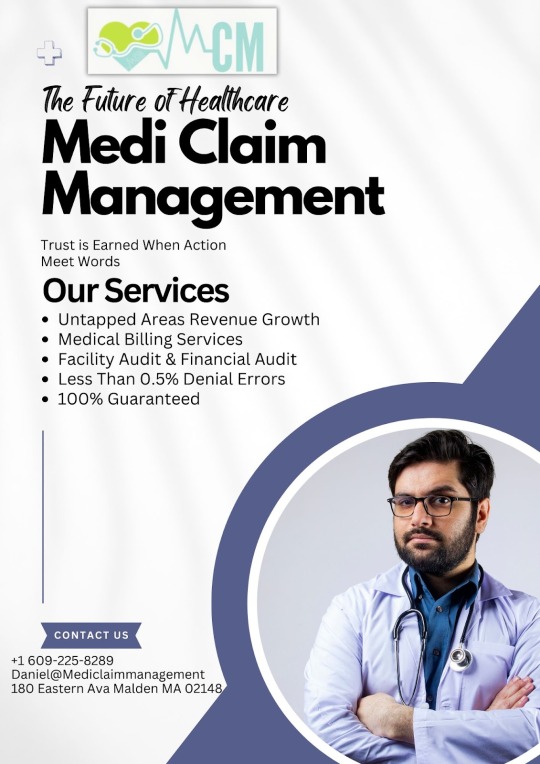#Digital Patient Care
Explore tagged Tumblr posts
Text
Contactless Patient Monitoring: Making Healthcare More Affordable and Accessible
The healthcare industry in India is rapidly evolving, with a growing focus on providing quality care at an affordable cost. One of the key driving factors for this transformation is the adoption of contactless patient monitoring systems.
Contactless patient monitoring systems use non-invasive sensors to track a patient's vital signs, such as heart rate, respiratory rate, and blood pressure. This data is then transmitted to a cloud-based system, where it can be monitored by healthcare providers.
Read Full Blog Here: https://www.grgonline.com/post/contactless-patient-monitoring-making-healthcare-more-affordable-and-accessible
There are several advantages to using contactless patient monitoring systems. First, they can help to reduce the risk of infection. Traditional patient monitoring systems require healthcare providers to come into close contact with patients, which can increase the risk of the spread of germs. Contactless systems eliminate this risk, as the sensors do not require physical contact with the patient.
Moreover, contactless patient monitoring systems can help to improve patient care. By providing continuous monitoring, these systems can help to identify changes in a patient's condition early on. This can give healthcare providers more time to intervene and prevent complications.
Additionally, contactless patient monitoring systems can help to reduce costs. By reducing the need for in-person visits, these systems can help to free up hospital beds and other resources. This can lead to lower overall cost of healthcare.
In India, the adoption of contactless patient monitoring systems is still in its early stages. However, the potential benefits of these systems are significant. As the technology continues to develop, contactless patient monitoring is likely to become increasingly widespread in India.
Benefits of Contactless Patient Monitoring
Improved patient safety: Contactless patient monitoring can help to reduce the risk of infection and improve patient safety. This is especially important in India, where the healthcare system is often overcrowded, and resources are limited.
Increased efficiency: Contactless patient monitoring can help to improve efficiency in the healthcare system. These systems can free up hospital beds and other resources by reducing the need for in-person visits. This can lead to a lower overall cost of healthcare.
Improved access to care: Contactless patient monitoring can help to improve access to care in India. By monitoring patients remotely, these systems can provide care to people who live in remote areas or have difficulty traveling to a hospital.
Overall, contactless patient monitoring systems have the potential to revolutionize healthcare in India. By improving patient safety, increasing efficiency, and improving access to care, these systems can help to make healthcare more affordable and accessible for all.
Challenges and the Road Ahead
Affordability: Cost is a crucial factor in a country like India, where a significant portion of the population has limited financial means. Making these advanced systems affordable and accessible to all is essential.
Infrastructure: The implementation of contactless patient monitoring systems requires robust and reliable internet connectivity, especially in remote areas. Improving the overall digital infrastructure is vital for their successful integration.
Data Security and Privacy: As with any technology dealing with sensitive medical data, ensuring strict data security and privacy measures is of utmost importance to gain patients' trust.
Healthcare Professional Training: Healthcare providers need proper training to utilize these technologies effectively and interpret the data accurately for better patient care.
Conclusion
Contactless patient monitoring systems represent a significant step forward in revolutionizing healthcare delivery in India. By enhancing vital monitoring with precise, non-invasive methods, these systems have the potential to greatly improve patient outcomes, reduce healthcare costs, and enhance the overall efficiency of medical services.
As technology continues to evolve, it is crucial for policymakers, healthcare providers, and technology developers to collaborate and overcome the challenges hindering the widespread adoption of these systems. With continued efforts in research, innovation, and accessibility, India can harness the full potential of contactless patient monitoring systems and provide its citizens with world-class healthcare services.
Visit our website now: https://www.grgonline.com/

#Contactless Healthcare#telemedicine#telehealth#healthcare industry#remote monitoring#telemonitoring#RemotePatientMonitoring#PatientMonitoring#virtual care#Digital Patient Care
0 notes
Text







here’s some of the last Christmas multifandom fanart I made for Christmas
#my art#digital art#art#artists on tumblr#artwork#doodle#care bears unlock the magic#care bears#care bears fanart#care bears au#Patient polar bear#Cozy heart penguin#cw: bl00d#cw: blood#krampus elves#sanrio#cinnamoroll#Milk latte the young reindeer#smiling critters#smiling critters fanart#christmas#christmas aesthetic
22 notes
·
View notes
Text


Okay, so @stardewvalleybut-i-draw had a really genius question and I couldn't just pass it up! so! here's something I cooked up based off that.
The differences are kind of subtle, but Nate's range of vision changes based off of the amount of eyes open. Just try closing one eye and observing how your vision is altered!
Nate doesn't usually have all six open at a given time- the ones on his cheeks are hardly eyes in any traditional sense of the term, but they add an additional layer of infrared feedback, as well as a very broad scope of vision to boot. It's no wonder why he always used it when working! he prefers normal colors and movement at home, thanks.
No text bubble ver under the cut~

Heehee taking care of your freak husbo so he doesn't stumble blindly into chairs and ceiling fixtures
#devarambles#nathanieltag#seraphinatag#He can do it himself but its nice being cared for#He tends to appreciate the little things#Nathaniel is not the best patient ironically enough#most doctors usually aren't.#wah im still super sorry for taking so long to respond#art#artwork#digital art#illustration#my art#my artwork#drawing#my OC#MY OCs#original character#ark_systema#singlepagertag#comics#oc comics#A_S Comics
24 notes
·
View notes
Text

"Don't worry, Aone, I've only got a few hours to go"
more hospital AU! I've mentioned nurse Aone, but also I think him and Futakuchi run into each other as one leaves and the other arrives most of the time. They have breakfast/dinner together. Sometimes Futakuchi works longer hours and Aone isn't always the biggest fan.
#art#haikyuu!!#aofuta#aone takanobu#futakuchi kenji#fan art#digital art#sketch#haikyuu art#hq rarepairs#hospital au#i forgot to ramble in the tags#how could i#anyway better late than never#so more AoFuta hospital au headcanons!#they take a while to actually get together and during the long mutual pining the other ngc catch on and mess with Futakuchi about it#but also its not like they wouldn't do the same to every other developing relationship in the group like no one is safe#again ICU nurse Aone he cares a lot about every single one of the patients he works with and is also the muscle on the unit
70 notes
·
View notes
Text


tomte, my wol, who really is that nice. (words from "laika" by patti white)
#chirps#bird in the hand#tomte peregrin#waghhhh im so out of practice with non-catcrumb digital art...#or just non-catcrumb art in general. oh how we get hoisted by our own petards#anyway. i really love her. she is my angel.#she's just genuinely a very kind & caring & generous & patient person who can deal with all the troubles in the world for her loved ones#and doesn't think of herself much. there's not a cynical bone in her body.#everybody but her is crying as they put her in a rocketship they don't know if she'll survive#she knows she is nigh indestructible and unfortunately she's not wrong.#robffxiv
24 notes
·
View notes
Text

poster art I had to make for class today
#digital art#illustration#poster#animal#infographic#patient care#wilderness medicine#their names are Lucky and Moxie
5 notes
·
View notes
Text
Checking the patient through the phone

Right now I'll explain the picture, Lou got sick and left Edik under Nick's supervision (sometimes Charles is very busy with work, then Nick looks after him). Nick checks on Lou's phone to see if she's okay and doesn't need anything.
I wanted to reveal more about Lou and Nick and show them completely, so look, admire
#art#draw#digital drawing#ship oc#art oc#my oc art#oc#my ocs#oc ship#cute#digital art#care#checking the patient through the phone#checking the patient#medical#my oc#my art work#my art#my artwork
4 notes
·
View notes
Text
Navigating the World of Direct-to-Consumer Healthcare Products: Empowerment and Ethical Considerations
Dive into the world of direct-to-consumer healthcare! In this article, we explore the ethical issues surrounding DTC healthcare products, the empowerment of consumers through digital health platforms, and the challenges and opportunities in direct-to-consumer telemedicine. Learn about the importance of ethical considerations in direct-to-consumer healthcare products. With the rise of DTC healthcare products, it's crucial to be an informed consumer. Before you click that "Buy Now" button, do your homework. Check for certifications, read reviews, and consult with healthcare professionals. Remember, your health is not something to gamble with. Discover how digital health platforms are revolutionizing the way we access and manage our health information. These platforms provide consumers with direct access to health-related data and services, bypassing traditional intermediaries like insurance companies and clinicians. This shift empowers consumers to take a more active role in managing their health. Explore the challenges and opportunities in direct-to-consumer telemedicine. Telemedicine offers convenience and accessibility, especially in remote areas where traditional healthcare infrastructure is limited. With just a few taps on your smartphone, you can connect with a healthcare provider and get the care you need. Stay informed and empowered in your healthcare journey. Your health is your most valuable asset, so make wise choices. If you have any questions or need further information, feel free to reach out. Until next time, stay healthy and stay curious! You can now copy and paste the entire article into your WordPress editor. If you need any further assistance or have any questions, feel free to ask!
Navigating the World of Direct-to-Consumer Healthcare Products: Empowerment and Ethical Considerations Introduction Welcome to the wild world of direct-to-consumer (DTC) healthcare products! In this brave new world, you can order anything from genetic tests to teeth alignment kits with just a few clicks. But hold your horses—or in this case, your prescription pads—because with great power comes…
#consumer empowerment#consumer health education#digital health platforms#digital health technologies#Direct-to-consumer healthcare#ethical issues#healthcare accessibility#healthcare e-commerce#healthcare industry trends#healthcare innovation#healthcare marketing#healthcare product safety#patient-centric care#regulatory oversight#telemedicine
0 notes
Text
Preventing Injuries with Real-Time Wearable Technology

Real-time wearable technology is transforming injury prevention and patient care, offering unprecedented insights into human movement and health risks. These intelligent devices, equipped with advanced sensors and AI, continuously track biomechanical signals to help healthcare professionals anticipate and prevent potential injuries. One critical application is addressing pressure injuries—a persistent challenge that impacts patient quality of life and hospital costs.
Traditional preventive measures like frequent patient turning are often inconsistently followed due to the physical demands on nursing staff. Wearable technology sensors now emerge as a game-changing solution, providing continuous monitoring and proactive intervention strategies that traditional methods cannot match.
Key Findings:
1. Real-Time Interventions: Wearable technology sensors offer real-time feedback to ensure patients are turned on schedule. These devices monitor patient movement and positioning, alerting nursing staff immediately if a patient hasn’t been repositioned or if the turn angle isn’t sufficient to relieve pressure. This real-time capability enables prompt corrective actions, directly preventing injuries.
2. Enhanced Compliance: With sensors in place, compliance with turning protocols skyrockets. Studies show increases from as low as 15% to over 80%, reducing the manual effort of tracking patient repositioning.
3. Fewer Injuries: Real-time monitoring has led to a reduction in hospital-acquired pressure injuries (HAPIs) by up to 70%. Patients are safeguarded against severe complications like deep tissue damage.
4. Economic Benefits: Hospitals benefit financially, saving an estimated $6,621 per patient by avoiding pressure injuries. This makes wearable sensors a cost-effective addition to patient care.
5. Improved Teamwork: Sensors encourage better communication and collaboration among nursing staff. They distribute the responsibility of turning patients more evenly, fostering teamwork.
Hospitals Leading the Way
Several hospitals have successfully implemented wearable sensor technology, demonstrating its effectiveness:
Stanford Health Care: A trial in two intensive care units showed a 73% reduction in HAPIs and improved adherence to turning protocols.
A Magnet Hospital in California: Turning compliance jumped from 67% to 95%, and sacrococcygeal HAPIs were reduced by 84.6%.
A Long-Term Acute Care Hospital in New Jersey: Achieved an 85% reduction in sacrococcygeal HAPIs with an average adherence to turning protocols of 87.3%.
A Medical Center in Pennsylvania: Over a year, this facility nearly doubled the national average for turn protocol adherence (90%) and reduced HAPIs by 67%.
These examples highlight how wearable sensors are revolutionizing care across various healthcare settings.
Challenges and Opportunities:
While wearable technology sensors excel in ensuring timely interventions, they don’t automatically improve the quality of turns (e.g., the precise angle needed to relieve pressure). Additionally, nursing teams need adequate training to fully leverage this technology and integrate it seamlessly into care routines.
Real-Time Innovations in Action:
The real-time intervention capability of these sensors is their standout feature. By promptly notifying caregivers, the sensors ensure no patient is left at risk for extended periods. Some devices even provide visual or auditory cues to further reinforce timely actions, making them a proactive tool in patient safety.
The Way Forward:
Wearable sensors are not a stand-alone solution but a vital component of a comprehensive prevention program. When paired with strategies like regular skin assessments and nutritional support, these devices can revolutionize how hospitals address pressure injuries.
Real-time fall prevention is a critical priority for hospitals and nursing homes. Discover how OK2StandUP is transforming patient safety and making a meaningful impact. Visit us at www.ok2standup.com to learn more.
#AI in healthcare#AI in nursing homes#Artificial intelligence benefits#AI for elder care#Aging population solutions#Smart nursing home technology#Healthcare innovation#AI-enhanced caregiving#Elder care technology#Nursing home efficiency#AI and patient safety#Medication management AI#Predicting fall risks#AI-driven wearables#Real-time health monitoring#Elderly care optimization#Smart caregiving tools#AI for senior living#Staff scheduling with AI#AI and healthcare costs#Nursing home automation#Aging demographics#Digital transformation in healthcare#Vital sign monitoring AI#Patient care technology#AI-powered healthcare solutions#Nursing home staffing challenges#AI healthcare innovation#Senior health monitoring#AI-assisted caregiving
0 notes
Text
Digital health platforms are redefining patient experiences and healthcare access, especially for those seeking timely and convenient care options. At an urgent care clinic in North Bergen, New Jersey, digital solutions offer a seamless interface, connecting patients to providers and expediting appointment scheduling. These platforms are reshaping traditional healthcare access, addressing both patient needs and provider efficiencies.
0 notes
Text
The Importance of Healthcare Cost Transparency: How Healthiga is Leading the Charge
Introduction
In recent years, healthcare costs in the United States have skyrocketed, leaving many patients struggling to understand their financial obligations. Healthiga aims to address this issue by providing a platform that enhances transparency in healthcare pricing. This article explores the significance of cost transparency in healthcare and how Healthiga is pioneering solutions to empower consumers.

Understanding Healthcare Cost Transparency
Healthcare cost transparency refers to the availability of clear and accessible information regarding the prices of medical services and procedures. This transparency is crucial for several reasons:
Empowering Patients: When patients have access to pricing information, they can make informed decisions about their care options.
Encouraging Competition: Transparent pricing fosters competition among providers, potentially driving down costs.
Reducing Financial Stress: Knowing the cost of services beforehand helps patients budget for their healthcare expenses.
Healthiga’s Approach to Cost Transparency
Healthiga utilizes advanced technology to provide users with real-time comparisons of healthcare costs across various providers. By integrating data from multiple sources, Healthiga ensures that consumers can easily find the best prices for the services they need.
Case Studies: Success Stories from Healthiga Users
This section will highlight testimonials from users who have successfully saved money on their healthcare expenses by utilizing Healthiga’s platform. Real-life examples will illustrate how cost transparency can lead to better financial outcomes for patients.
Conclusion
As healthcare costs continue to rise, platforms like Healthiga play a vital role in promoting transparency and empowering consumers. By helping patients navigate the complexities of healthcare pricing, Healthiga is not only improving individual financial situations but also contributing to a more efficient healthcare system overall.
#Redefining healthcare#Modern healthcare solutions#Personalized healthcare#Innovative health technology#Advanced health management#Patient-centered care#Healthcare transformation#Digital healthcare tools#Efficient health services#Technology-driven healthcare
0 notes
Text
youtube
#Pulmonary arterial hypertension#clinical trials#PAH#pulmonary hypertension#cardiovascular health#gene therapy#biomarkers#patient care#personalized medicine#regenerative medicine#targeted therapies#rare disease#digital health#drug development#innovative therapies#disease progression#heart and lung health#medical research#PAH treatments#combination therapy.#Youtube
0 notes
Text
Optimizing Financial Management with Chiropractic Billing Services

In the healthcare sector, chiropractic care plays a vital role in managing musculoskeletal conditions, improving mobility, and enhancing patients' overall quality of life. However, managing the financial aspects of a chiropractic practice can be challenging due to the unique nature of treatments, frequent patient visits, and varying insurance policies. This is where medical billing services come into play, ensuring that chiropractic practices can focus on providing care while their financial operations run smoothly. These services streamline the billing process, minimize errors, and enhance reimbursement rates, which ultimately leads to better revenue management for chiropractic practices.
What Are Chiropractic Billing Services?
Chiropractic billing services are specialized financial solutions designed to meet the unique needs of chiropractic practices. These services are a critical component of Revenue Cycle Management (RCM) services, which oversee the entire process of patient billing, from claim submission to final payment. Chiropractic billing services handle everything from insurance verification and coding of chiropractic adjustments to following up on claims and managing denials. Since chiropractic care often involves ongoing treatments and multiple patient visits, these billing services ensure that claims are submitted accurately and promptly, reducing delays and maximizing revenue.
The Importance of Medical Billing and Coding in Chiropractic Care
Accurate medical billing and coding is essential for chiropractic practices to ensure that they are compensated for the services they provide. Chiropractic care involves various treatments, such as spinal adjustments, physical therapy, and other therapeutic services, each of which requires precise coding to avoid errors. Incorrect or incomplete coding can lead to claim denials or underpayments, which can negatively affect a practice’s cash flow. By partnering with experienced billing professionals who specialize in medical billing and coding, chiropractic practices can ensure that their claims are submitted correctly and in compliance with industry standards, leading to improved financial outcomes.
Benefits of Healthcare IT in Chiropractic Billing
In the digital age, Healthcare IT has transformed the way billing services are managed, offering numerous benefits for chiropractic practices. Advanced billing software and electronic health record (EHR) systems streamline the billing process by automating tasks such as claim submission, coding, and patient record management. Healthcare IT reduces human error, speeds up payment cycles, and allows for better communication between chiropractic providers and insurance companies. Additionally, real-time tracking and reporting features enable chiropractic practices to monitor the status of claims and payments, ensuring that revenue is managed efficiently. Healthcare IT enhances both the accuracy and efficiency of chiropractic billing, leading to improved practice operations.
Chiropractic Billing Services at Mediclaim Management
Mediclaim Management offers specialized Chiropractic Billing Services designed to meet the needs of chiropractic practices. With a deep understanding of the unique challenges that chiropractors face, their team of billing experts ensures that all aspects of the billing process are handled with precision and care. Mediclaim Management’s Chiropractic Billing Services help providers reduce billing errors, increase claim approval rates, and expedite reimbursements. By partnering with Mediclaim Management, chiropractic practices can focus on delivering high-quality care to their patients while ensuring that their financial operations run smoothly in the background.
With Mediclaim Management’s Chiropractic Billing Services, chiropractic providers can optimize their revenue cycle, reduce financial stress, and ensure that their practice remains financially healthy. This allows chiropractors to focus on what truly matters—improving the health and well-being of their patients.
#medical billing#Optimizing Financial Management with Chiropractic Billing Services#In the healthcare sector#chiropractic care plays a vital role in managing musculoskeletal conditions#improving mobility#and enhancing patients' overall quality of life. However#managing the financial aspects of a chiropractic practice can be challenging due to the unique nature of treatments#frequent patient visits#and varying insurance policies. This is where medical billing services come into play#ensuring that chiropractic practices can focus on providing care while their financial operations run smoothly. These services streamline t#minimize errors#and enhance reimbursement rates#which ultimately leads to better revenue management for chiropractic practices.#What Are Chiropractic Billing Services?#Chiropractic billing services are specialized financial solutions designed to meet the unique needs of chiropractic practices. These servic#which oversee the entire process of patient billing#from claim submission to final payment. Chiropractic billing services handle everything from insurance verification and coding of chiroprac#these billing services ensure that claims are submitted accurately and promptly#reducing delays and maximizing revenue.#The Importance of Medical Billing and Coding in Chiropractic Care#Accurate medical billing and coding is essential for chiropractic practices to ensure that they are compensated for the services they provi#such as spinal adjustments#physical therapy#and other therapeutic services#each of which requires precise coding to avoid errors. Incorrect or incomplete coding can lead to claim denials or underpayments#which can negatively affect a practice’s cash flow. By partnering with experienced billing professionals who specialize in medical billing#chiropractic practices can ensure that their claims are submitted correctly and in compliance with industry standards#leading to improved financial outcomes.#Benefits of Healthcare IT in Chiropractic Billing#In the digital age
0 notes
Text
The Future of Minimally Invasive Dentistry: A Patient-Centered Approach to Oral Health
Minimally invasive dentistry (MID) is revolutionizing the way dental care is approached, placing greater emphasis on preserving the natural structure of the teeth and gums. This patient-centered philosophy has rapidly become one of the most important trends in modern dental practice. In this blog post, we’ll dive into what MID is, why it’s important, and how it’s shaping the future of…
#air abrasion#cavity prevention#conservative dentistry#dental anxiety#dental innovations#dental preservation#dental sealants#dental technology#dental treatments#dental-care#digital impressions#laser dentistry#minimally invasive dentistry#modern dental care#oral-health#patient-centered dentistry#preventive dental care#preventive dentistry#resin infiltration#restorative dentistry#tooth decay prevention
0 notes
Text
Revolutionizing Healthcare with Remote Healthcare Assistants
The healthcare landscape is rapidly evolving, propelled by technological advancements and the rising demand for more efficient patient care. One of the most significant changes is the increasing reliance on remote support. In this context, remote healthcare assistants emerge as game-changers, offering a blend of expertise and technology to streamline healthcare services. This guide will explore…
#digital healthcare solutions#healthcare automation#healthcare industry#Healthcare Technology#innovation in healthcare#medical assistance#medical professionals support#patient care#remote healthcare assistants#remote patient monitoring#telehealth services#Telemedicine#virtual healthcare support#virtual medical care
0 notes
Text
Digital Health Revolution: Transforming Patient Care with AquSag Technologies

Discover how digital health is revolutionizing healthcare delivery. Learn about the latest advancements in telemedicine, AI-powered diagnostics, and electronic health records. AquSag Technologies offers expert solutions to help healthcare organizations improve patient outcomes, enhance operational efficiency, and embrace the future of medicine.
#digital health#telemedicine#AI in healthcare#electronic health records#healthcare innovation#patient care#healthcare technology.
0 notes